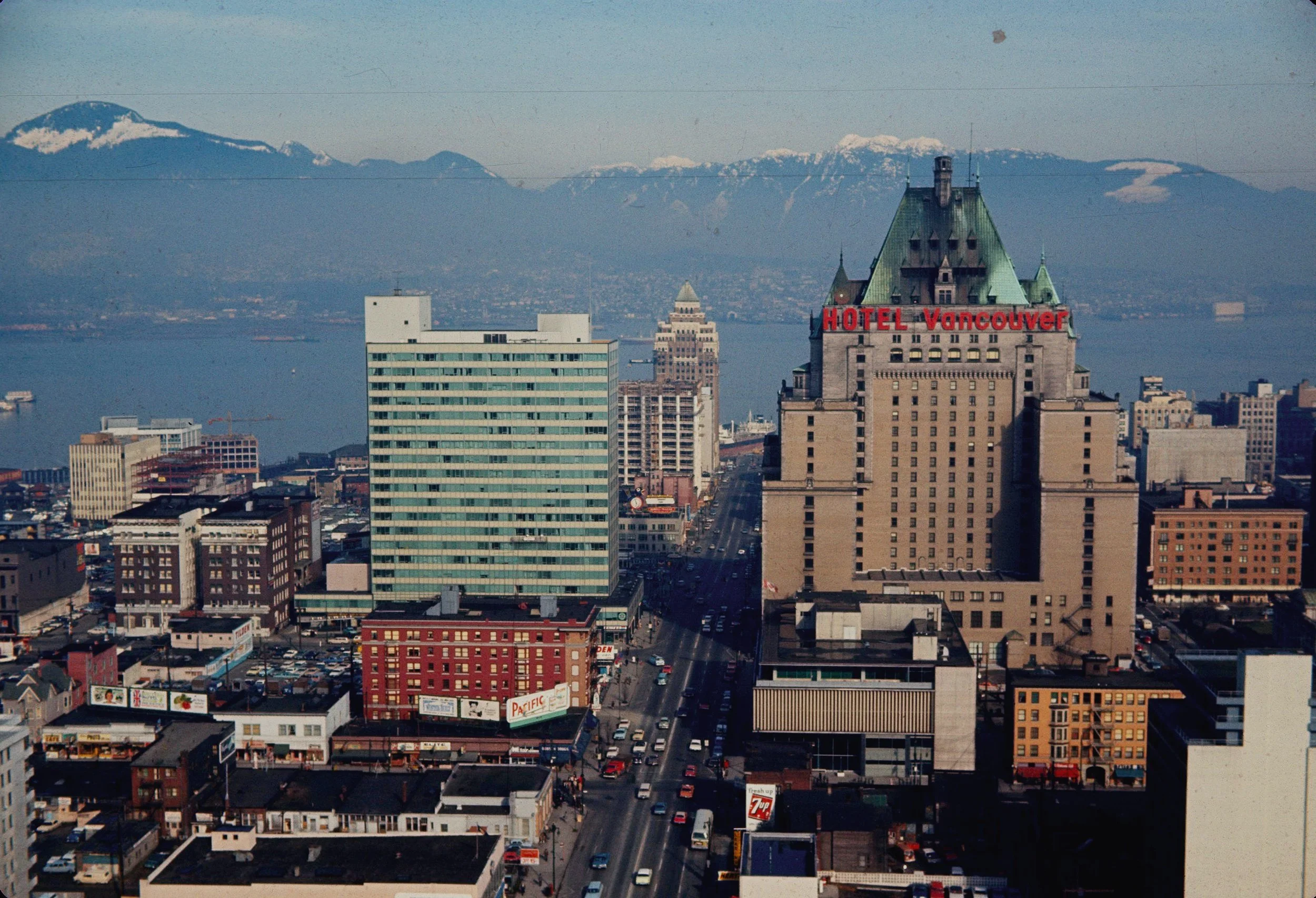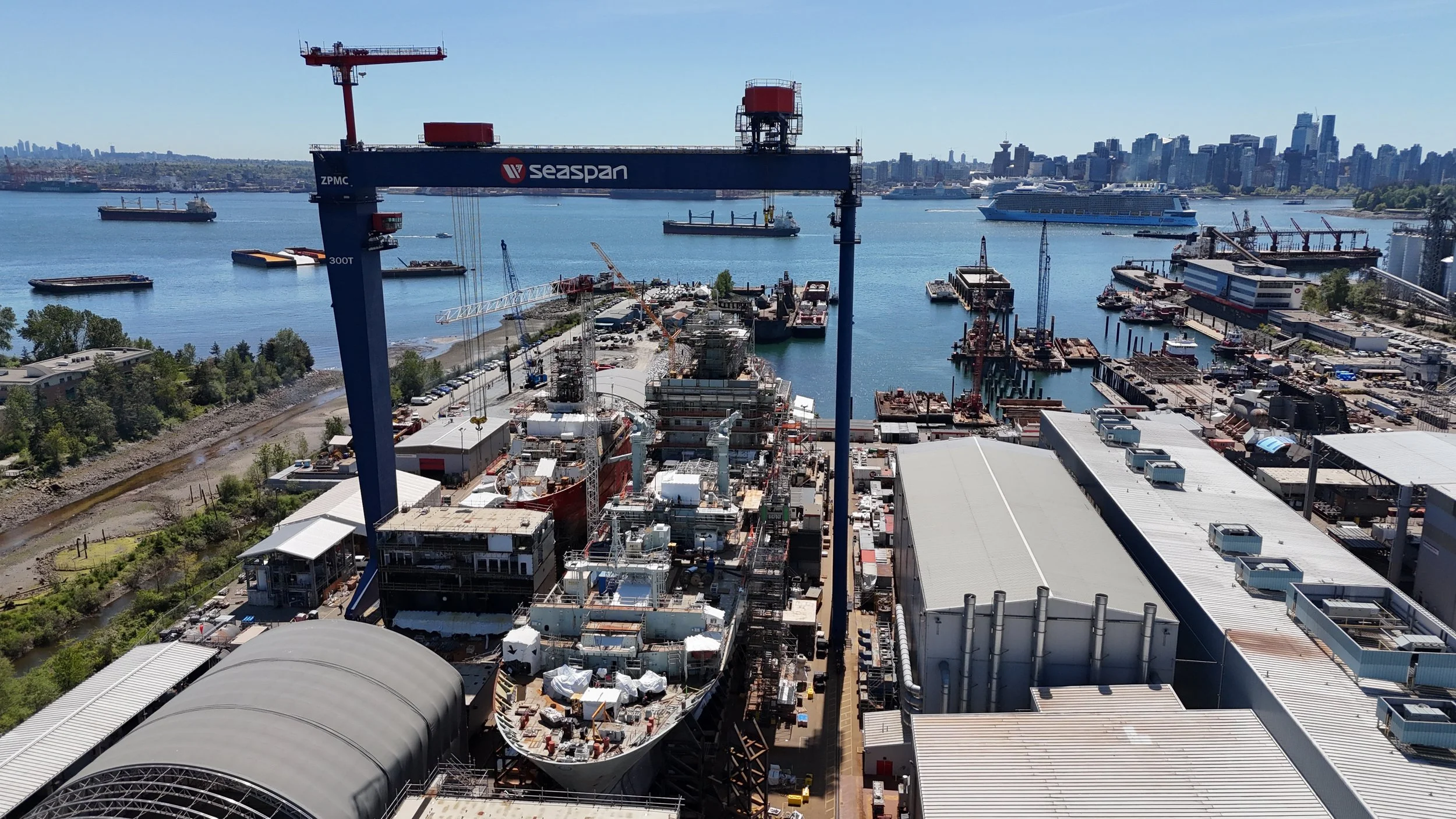Building More Than Ships With Seaspan
The year is 1966. The Beatles just launched their hit album Revolver, the series premier of Star Trek is broadcasting across the airwaves, and the NFL is preparing for the first ever Super Bowl. It’s also the year when a group of B.C. businesses and associations decided to collaborate on a brighter future by forming what is now known as the Business Council of British Columbia (BCBC).
Downtown Vancouver, 1966 (City of Vancouver Archives)
One of those 27 original BCBC members was Island Tug & Barge Limited. Founded in 1925 by Harold B. Elworthy and the Coulson brothers, the company quickly grew into one of the largest in the industry before merging with the Vancouver Tugboat Company to form what is now known as Seaspan ULC.
Today, some 58 years after BCBC started, Seaspan remains a proud member. Over the years, it has expanded to become a cornerstone of British Columbia's maritime industry, significantly contributing to the province's economy through its diverse operations in shipbuilding, ship repair, marine transportation, and ferry services.
As a founding member of BCBC with a long history of building big things in the province, we couldn’t think of a better business to help us kickstart our Building Prosperity campaign. The campaign aims to highlight how our members are building prosperity in B.C. in their own unique ways.
Seaspan is reviving the maritime industry in B.C. – something that quickly became apparent when the BCBC team had the opportunity to visit Seaspan Vancouver Shipyards’ operations in North Vancouver.
During our visit, we witnessed firsthand the meticulous craftsmanship that goes into everything Seaspan does at their state-of-the-art facility. The shipyard was buzzing with activity, including the construction of three new vessels – two Joint Support Ships for the Royal Canadian Navy and an Offshore Oceanographic Science Vessel for the Canadian Coast Guard. We were also given a sneak peek at their designs for their next major project, the new Polar Icebreaker for the Canadian Coast Guard. It was very cool.
The BCBC Team at Seaspan Shipyards (Left to right: Sydney Juzenas, Ken Peacock and Laura Jones)
Beyond our awe at what it takes to build a new ship, what really impressed us was a noticeable focus on partnerships and investments in the future. We saw Seaspan’s training facility, the Welding Centre of Excellence, which has rows of welding booths and an entire science laboratory used in partnership with the British Columbia Institute of Technology (another BCBC member 🎉). Together, they are educating the next generation of skilled laborers that we will need to advance our maritime capabilities and continue building a strong economy.
We also saw the results of $185 million Seaspan has invested in technology, infrastructure, and talent over the past decade to modernize the shipyard to reliably and safely deliver Canada’s next generation of marine capability. Investments like these are creating ripple effects and generating economic opportunities right across the province and beyond our borders.
When we asked about the numbers (because we’re economic geeks at heart) we were blown away.
Between 2012 and 2022, Seaspan’s National Shipbuilding Strategy-related activities, together with repair, refit and maintenance activities have contributed $5.7 billion to GDP and 7,330 annual jobs in Canada. Through 2035, they project this will increase to a staggering $20.7 billion and 10,938 jobs annually.
Drone photo of VSY and outfit pier. Captured May 9, 2024 by Sebastian Cline. (Seaspan ULC)
We left Seaspan Shipyards with a new appreciation for the years of planning, investment and training that goes into shipbuilding and for how much their work impacts the broader economy and communities.
Thank you, Seaspan Shipyards, especially to James Clarke and David Hargreaves, for hosting us and providing a behind-the-scenes look at the impressive work that goes into building maritime giants.
Stay tuned for more highlights as we continue our campaign, showcasing the unique aspects of each BCBC member as we build a stronger, more prosperous province together.
DID YOU KNOW?
Modern shipbuilding is a lot like LEGO; Seaspan takes small pieces and builds them into blocks, which are then consolidated to form the big, complex, and multi-mission ships that Seaspan is currently building for the Canadian Coast Guard and the Royal Canadian Navy under the National Shipbuilding Strategy.
Seaspan moves big block pieces and accomplishes those heavy lifts with ‘Big Blue’, their hardworking 300 tonne gantry crane, which has become a North Shore landmark. This year marks Big Blue’s 10th anniversary at Seaspan Shipyards. They couldn’t build big ships without it!
Seaspan ULC has a total workforce of over 4,700 which spans three shipyards: Vancouver Shipyards, Vancouver Drydock, and Victoria Shipyards; and Seaspan’s marine division.
Speaking of Seaspan Marine, their fleet is the largest and most diverse tug and barge company on Canada’s West Coast – their tugs can often be seen hard at work along the coast whether they are docking large ships, or safely navigating oil tankers.
HaiSea Marine, a joint venture partnership between Seaspan and the Haisla Nation, has built one of the greenest tugboat fleets in the world – and even welcomed the world’s first fully electric tugboat last summer, the HaiSea Wamis. The HaiSea fleet will be based in Kitimat to support and expertly guide LNG carriers in and out of the Douglas Channel from LNG Canada’s new export facility.












